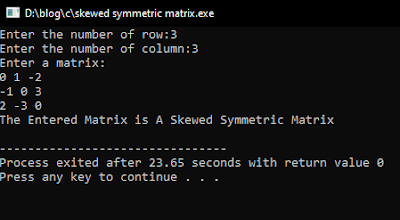Source code:
/*Numerical Method: Bi Section method to find a root of the equation a*x*x + b*x +c. The program read should the values of a,b and c and values for starting left and right points. */
#include <stdio.h>
#include <math.h>
double myFunction(double x, double a, double b,double c)
{
return a*x*x + b*x +c;
}
int main(void){
double a,b,c;
double leftpt, rightpt, midpt, epsilon = .0000001;
double midvalue, rtvalue, root;
printf("Enter the value of 'a','b' and 'c': ");
scanf("%lf %lf %lf", &a, &b, &c);
printf("Enter the value of left and right point: ");
scanf("%lf %lf", &leftpt, &rightpt);
do {
midpt = (leftpt + rightpt)/2;
rtvalue = myFunction(rightpt,a,b,c);
midvalue = myFunction(midpt,a,b,c);
if (rtvalue * midvalue >= 0)
rightpt = midpt;
else
leftpt = midpt;
} while ((rightpt - leftpt) > epsilon);
root = (rightpt+leftpt)/2;
printf("Root for equation%5.2lf*x**2+%5.2lf*x+%5.2lf is",a,b,c);
printf("%5.2lf\n",root);
return 0;
}
Output:









